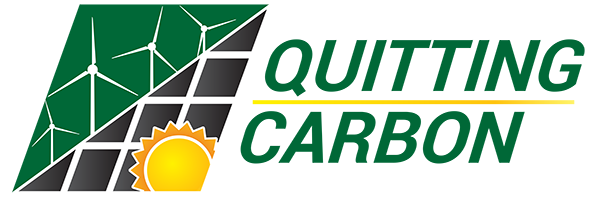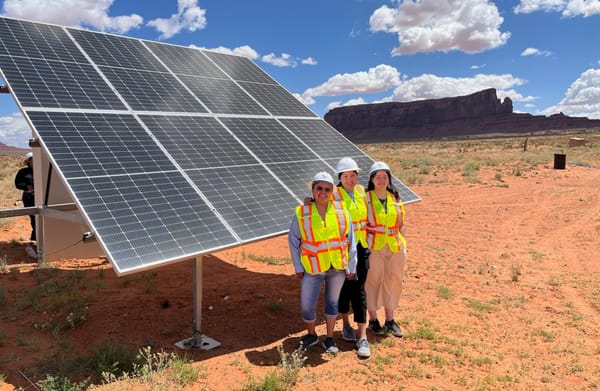What I’m reading: Marine energy, electric trains and buses, and more

We journalists read all day, sifting through reams of news stories, PR pitches, press releases, reports, and studies to inform and shape the stories we bring you. Not all this raw material will be grist for one of our own stories, but so much of it is still well worth your time.
With that in mind, today’s newsletter is the first installment of an ongoing series where once or twice a month on Friday I’ll highlight nuggets I’ve unearthed from my daily reading. Enjoy!
Marine energy is still emerging but getting closer: Marine energy – converting the power of waves, tides, or currents into electricity – has been an emerging sector for a long time. I published a survey of the potential for ocean energy for Ensia a decade ago. But a project under development off the coast of Oregon should jumpstart the nascent sector. Seven miles offshore the town of Newport, Oregon State University is building the $100 million PacWave facility, where developers will test wave energy conversion devices at four berths and send up to 20 megawatts of electricity to the local grid beginning next year. (I reported on PacWave in 2020 for Greentech Media, when the project received $35 million from the US Department of Energy.) “The research that’s been done in the past 15 years is reaching the point of what we can do just in labs or in theory. We’ve got to start testing some of this stuff out and see what works and what doesn’t,” DOE’s Matthew Grosso told the Washington Post’s Sarah Raza.
Biden administration rushes to complete energy efficiency standards: Energy efficiency rules are one of the most effective tools policymakers have available to reduce climate pollution and advance the energy transition. The current White House has made the rules a priority. “The Biden administration has made great progress updating appliance and equipment efficiency standards,” Appliance Standards Awareness Project (ASAP) Executive Director Andrew deLaski wrote in a blog post this week. Just how much progress? ASAP calculated that the Biden administration is about 85% of the way to meeting the target it set last year to complete efficiency standards this term that would save nearly $1 trillion and reduce greenhouse gas emissions by 2.5 billion metric tons over 30 years.
Donald Trump will try to undermine existing efficiency rules and make it harder to write new ones going forward, as he did in his first term, but as the Washington Post’s Nicolás Rivero reported this week, it will not be easy. “Although it’s hard to roll back a standard that’s already in place, it’s not that hard to slow-walk all of the standards that need to be looked at every year,” National Consumer Law Center Senior Attorney Charlie Harak told Rivero.
Riders love Caltrain’s new electric trains: I’m convinced Americans will become evangelists for high-speed rail – when a line is actually built in this country. Caltrain is not high-speed rail but the electrification of the line’s San Jose-San Francisco segment will enable California’s under-development high-speed rail line to roll into downtown San Francisco sometime early next decade. Until then, we’re seeing how enthusiastic Bay Area residents are about Caltrain’s new electric trains. “In the first month of its electric train service, Caltrain saw over 753,000 passengers – a 54% increase from October 2023 and its best ridership numbers since the coronavirus pandemic,” Mass Transit reported this week. “Quieter, cleaner air, faster, more frequent, cheaper to run. Winwinwinwinwin,” climate investor Bill Weil replied when I shared this news on Bluesky. Exactly.
Infrastructure Week finally delivers – under Biden: Want a sense of the scale of the projects underway across the country with funding from the $1.2 trillion Bipartisan Infrastructure Law? “If I visited a project every day for the rest of my life, I would not live long enough to see half of the projects,” Transportation Secretary Pete Buttigieg said in an interview with Fast Company’s Adele Peters. The whole interview is worth a read.
NREL boosts combat vehicle fuel efficiency: The US Department of Energy’s national labs are a national treasure. Here’s yet one more reason why. Researchers at the National Renewable Energy Laboratory (NREL) will over the next three years develop traction invertors that will double the range of Army combat vehicles. The new power electronics “will enable 53% fuel savings compared to existing technologies, meaning Army vehicles will be able to stay in the field for nearly twice as long before needing to refuel. Combined with silent performance thanks to the hybrid-electric engine and electromagnetic interference shielding, Army ground combat vehicles are poised to become safer, longer-range, and higher-performing than ever before,” according to NREL. The improved fuel efficiency will also save lives: attacks on fuel conveys were a lethal vulnerability for US forces during the wars in Iraq and Afghanistan.
Electric buses on campus: UCLA received a nearly $20 million grant from the State of California to support 100% electrification of the BruinBus fleet by 2028 and to install California’s first in-road electric charging system. I’m also happy to share campus climate mobility news from my alma mater. Northern Arizona University announced this week it was one of three universities nationwide to receive a grant from the US EPA to roll out new electric buses. NAU received $991,772 to replace two 2008 diesel buses with battery electric buses and to install high-speed charging infrastructure. NAU says the new electric buses should save the university up to $50,000 on annual operational costs. Go Lumberjacks!
Bonus: (in which I'll highlight a story focused on a non-energy transition-related passion of mine – perhaps travel, baseball, or craft beer – or that showcases some lovely writing from a writer I admire) I’m working my way through a stack of hard-copy New Yorker back issues and last night read a gem of an essay by Kathryn Schulz on the Westminster Dog Show. Schulz’s beautiful close made me think of my rescue dog, Coco: “Dogs are remarkably attuned to our physical needs, able to assist disabled people and warn us of impending danger, not to mention detect and in some cases help patients manage a wide range of diseases, from epilepsy to lung cancer. In part through these acts of aid and attentiveness but also through their mere presence, they seem to demonstrate two qualities almost all of us crave – adoration and loyalty. Yet the crucial thing is not that they love us, or seem to, but the converse: they give us a way to love the world, our most important bulwark against despair. That makes all of them, not just the St. Bernards, rescue dogs—still showing up to save us, no matter how cold or dark or steep or scary it gets out there.”
Coming up next: I’ll be back in your inbox early next week with new reporting on heat pumps. After that, I’ll take a break to spend the Thanksgiving holiday with my family in Arizona.
Like what you are reading? Quitting Carbon is a reader-supported publication. To support my work, please consider becoming a paid subscriber or making a one-time donation. Thank you to all who have already subscribed!




